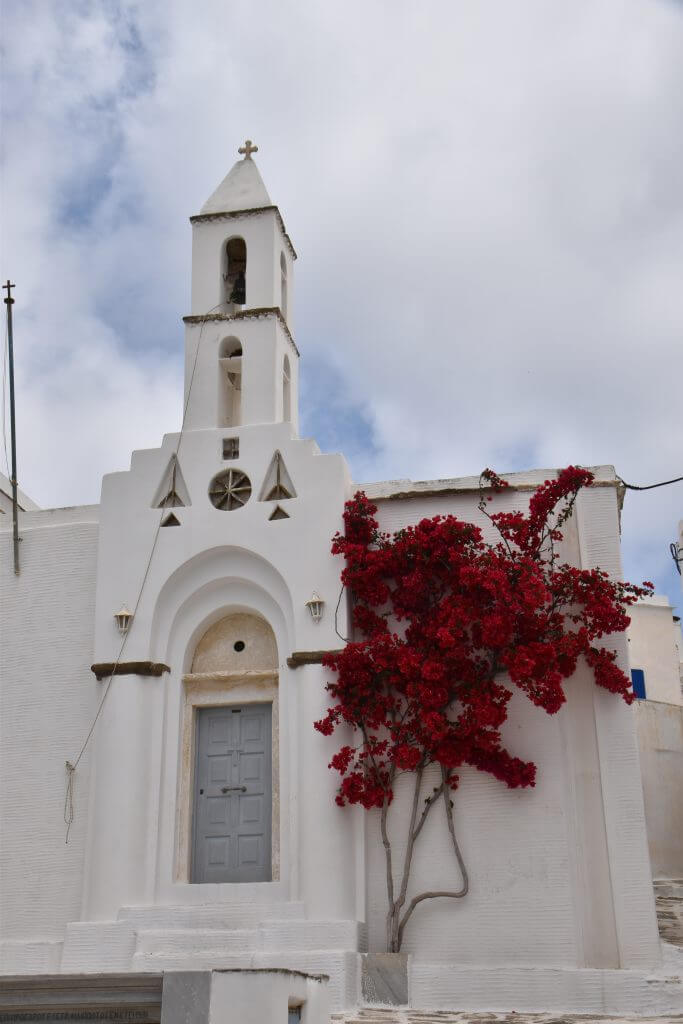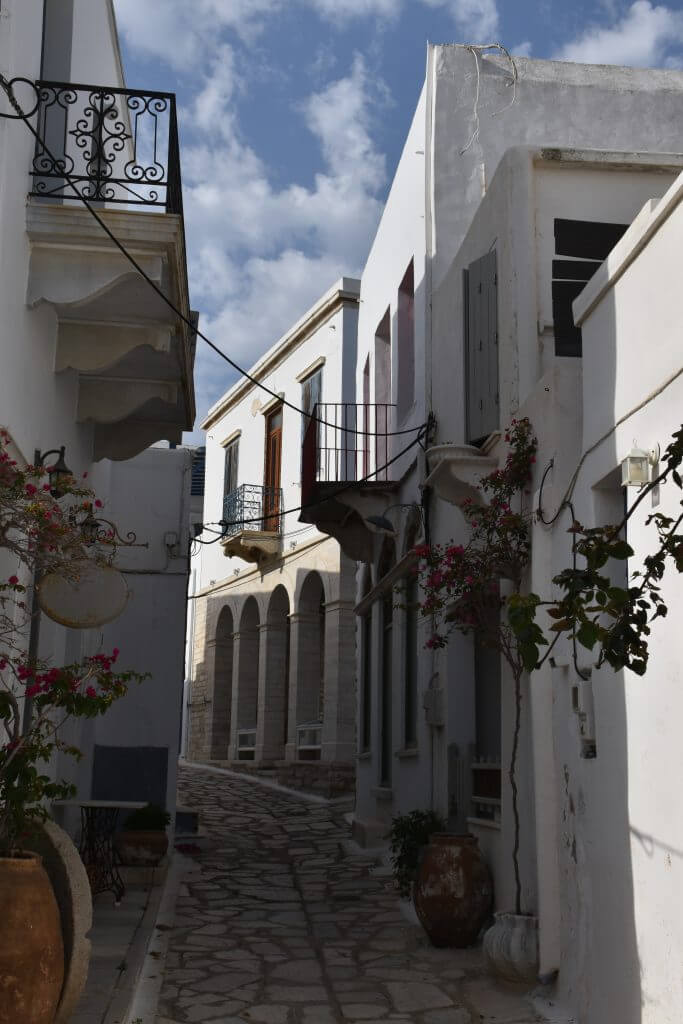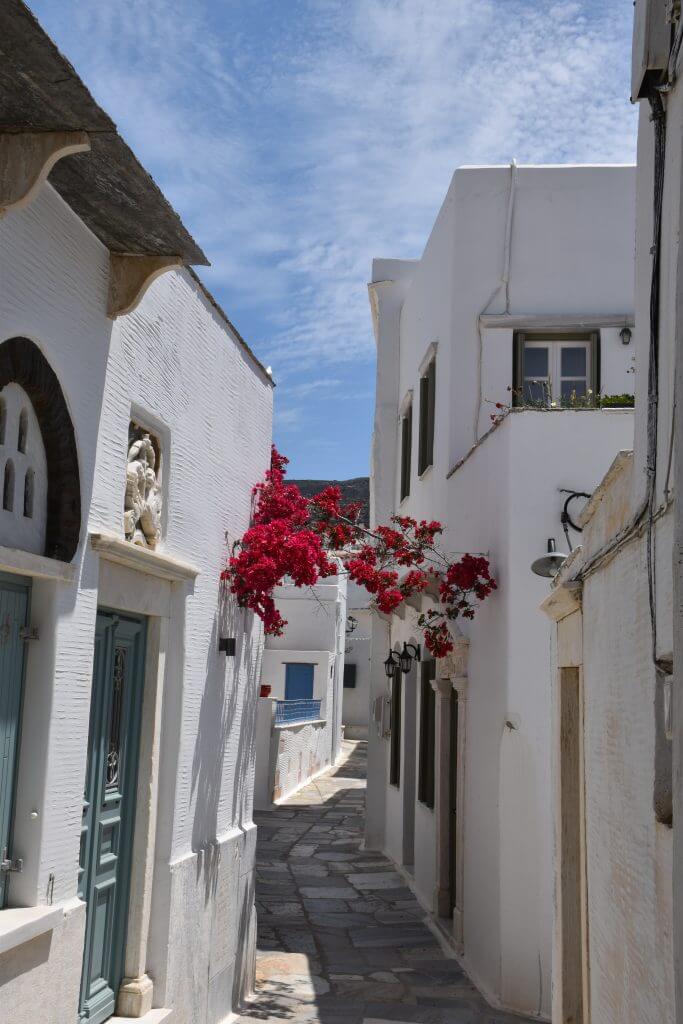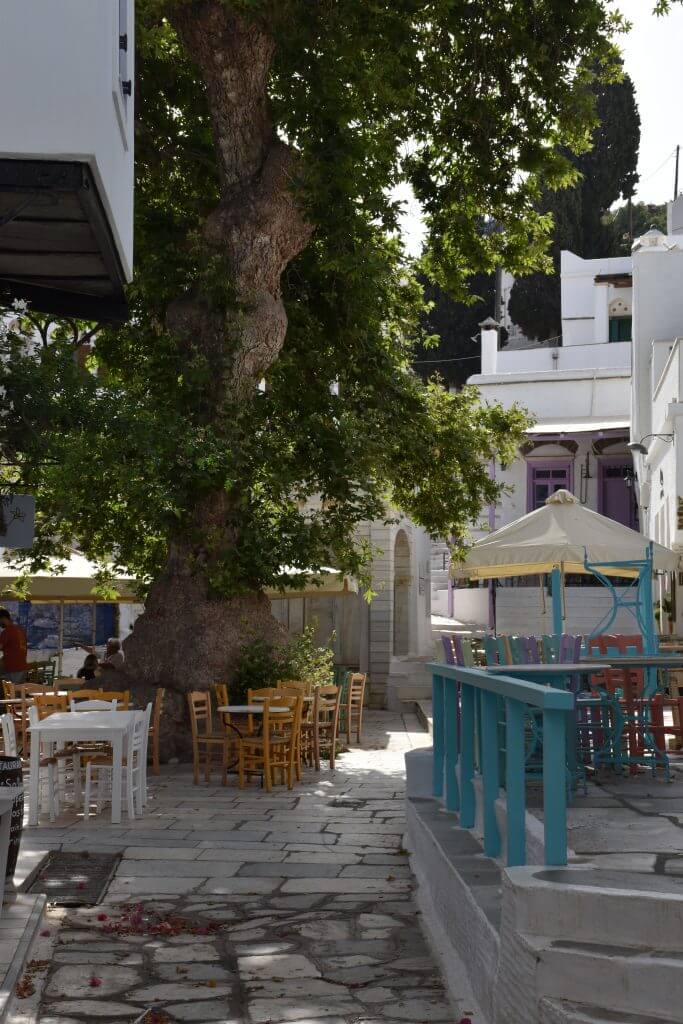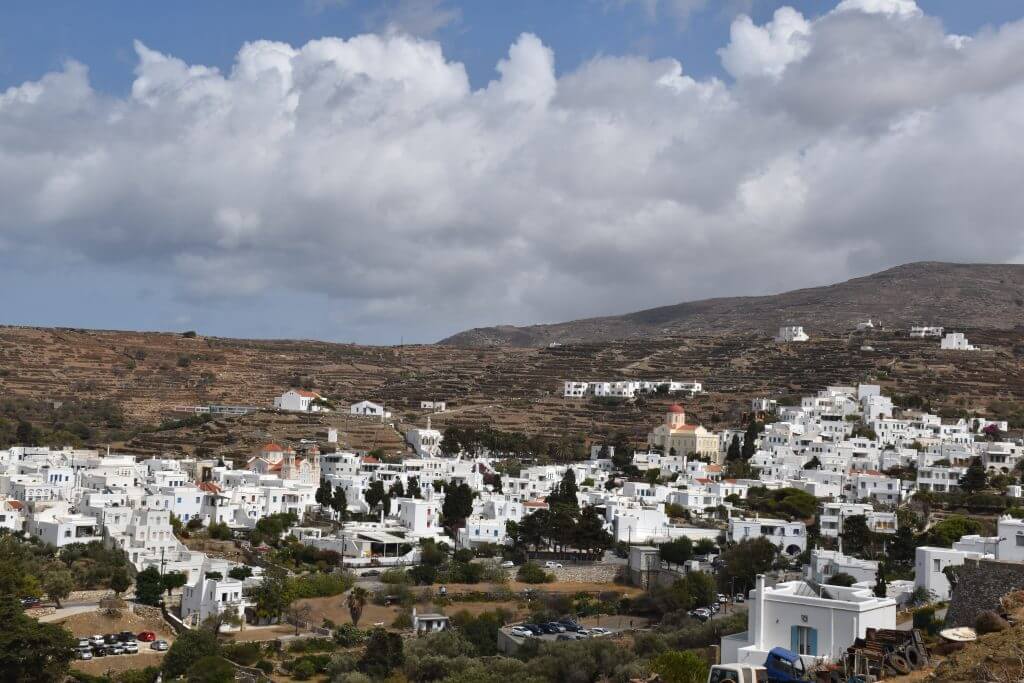
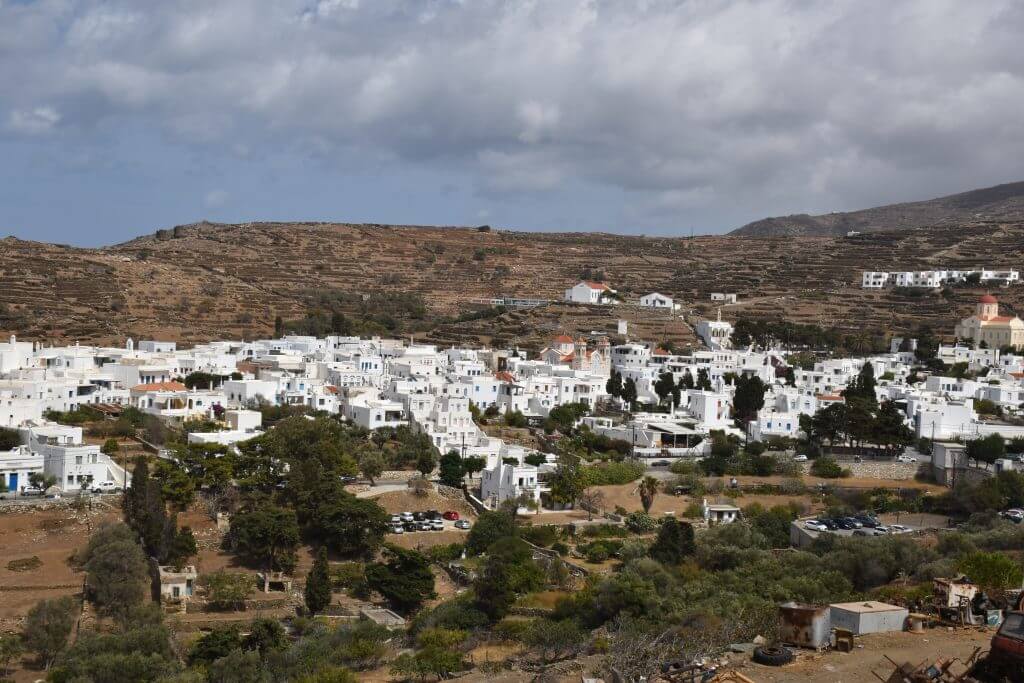
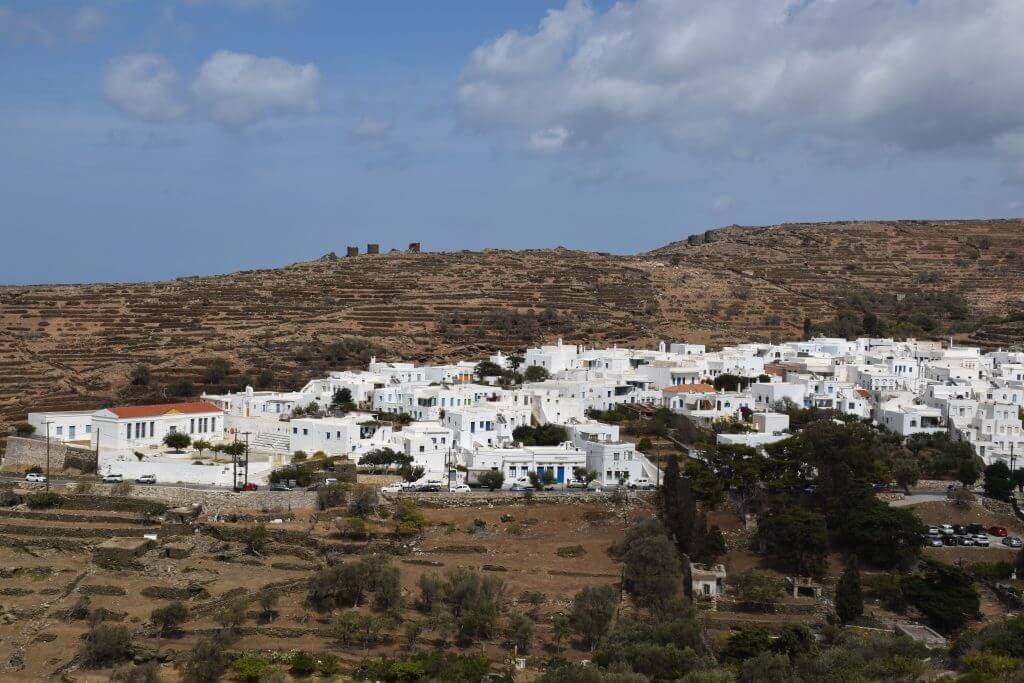
The Higher School of Fine Arts & Marble Craftsmanship Panormos Tinos, is located in the northern part of Tinos island, in the village of Pyrgos, which is a traditional settlement with 566 permanent inhabitants (according to ELSTAT 2023) and a rich history. Together with the smaller villages of Platia, Venardados, Marlas, Mamados and Panormos, as well as the more recent holiday settlements of Rochari, Mali, and Koumelas, it constitutes the former Historical Municipality of Panormos. Archaeological findings testify to the presence of life and settlement in the broader area since the early Mycenaean period. Subsequently, the region followed the historical course of the island, enduring Roman rule, pirate attacks by the Arabs during the Byzantine era, and ultimately Venetian occupation from 1207, which ended in 1715 with the surrender of the island by the Venetians to the Turks. Tinos was liberated alongside the rest of Greece in 1822 .
Pyrgos served as the seat of the Municipality of Panormos, which included the villages of Ysternia and Kardiani, later transformed into autonomous communities.
Pyrgos, which is the center of marble craftsmanship of Tinos and of Greece as a whole, is surrounded by an exceptional natural landscape of hills, plains and ravines, where stone and marble from the old quarries alternate with narrow stretches of cultivated land. For reasons of security, to protect against potential pirate attacks, Pyrgos was built without a view of the port of Panormos, located only three kilometers away from the sea. A map from 1571 depicts a tall and well-constructed tower of military and defensive importance, from which, most likely, Pyrgos derives its name.
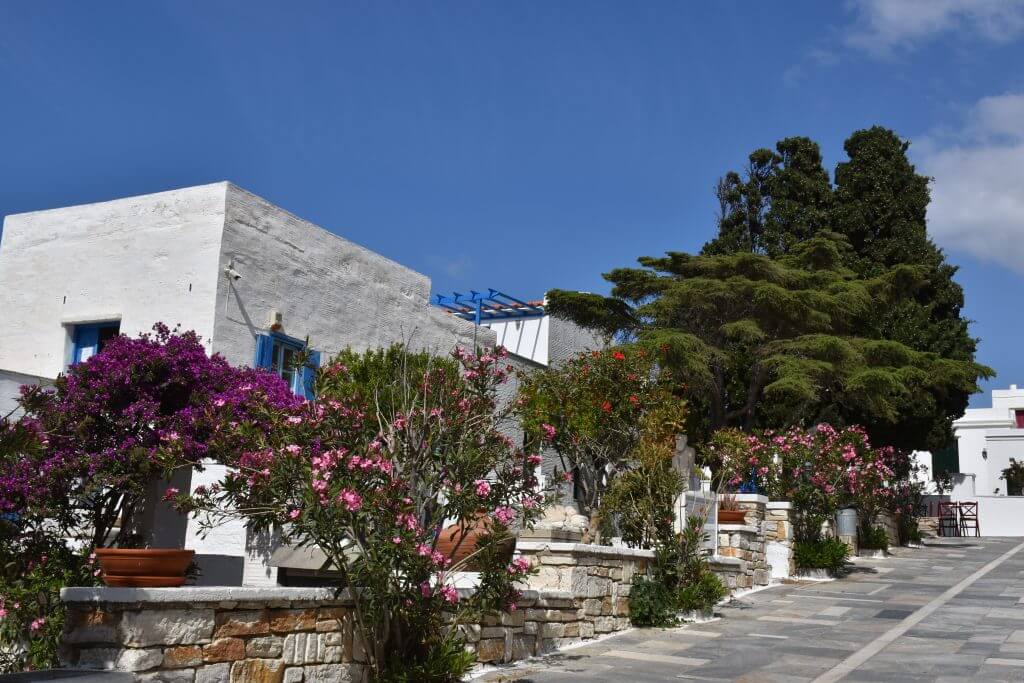
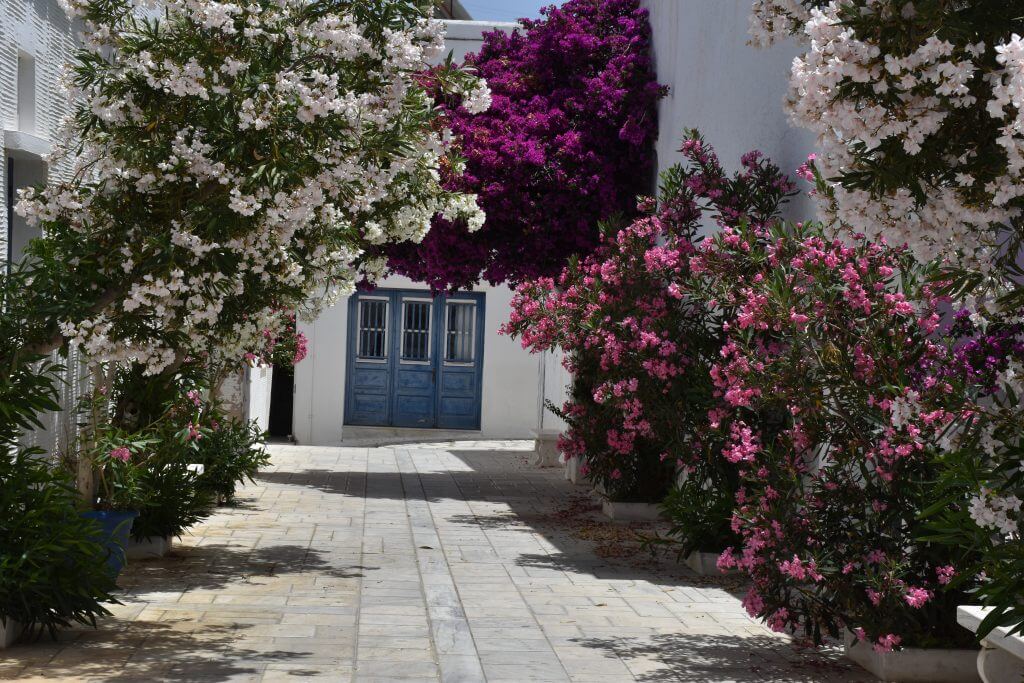
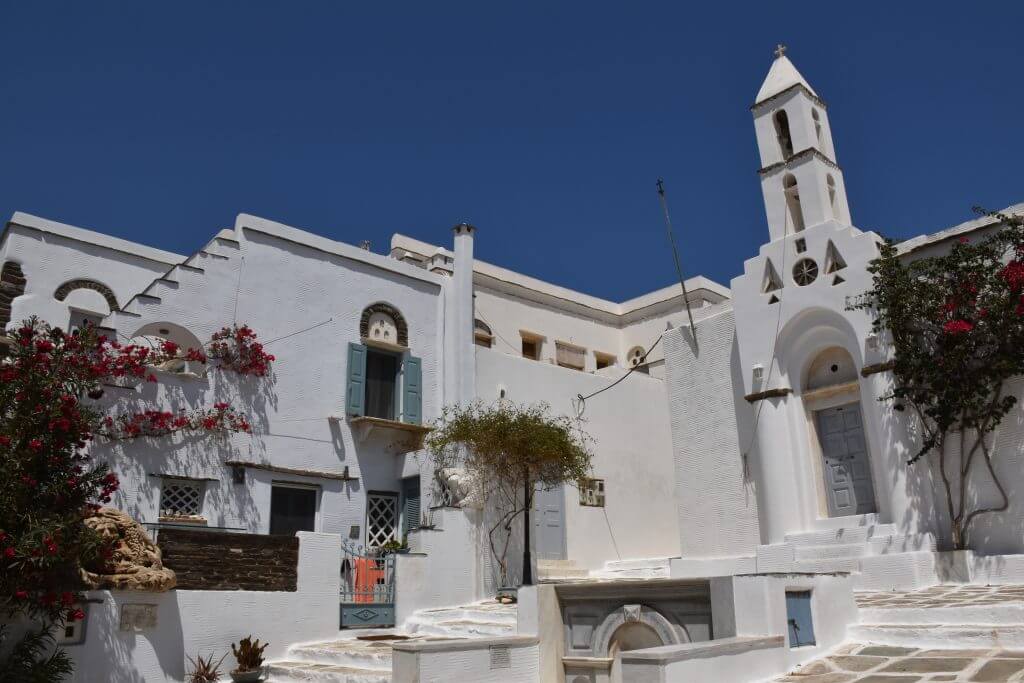
A tour of the village reveals its unique architecture. The whitewashed houses with blue windows, the marble doorframes and traditional lintels, the elaborate doorways, the two large churches and the chapels, all preserve tradition to this day. On the cobbled narrow streets and arches, the Aegean light plays with the shadows. The village’s square, with its centuries-old sycamore tree and marble fountain, its churches with marble iconostases and its chapels, are works of folk art. The cemetery, with its sculpted tombstones, the Museum of Marble Crafts, the School of Fine Arts (Higher School of Fine Arts & Marble Craftsmanship, Panormos Tinos), the Museum of Tinian Artists, and the House-Museum of Giannoulis Chalepas, attract numerous visitors every year who wish to learn about the art of marble and the local traditions.
Pyrgos, rich in marble quarries, was the birthplace of some of the most renowned sculptors and painters of modern Greece. In 1955, the Preparatory and Professional School of Fine Arts of Panormos Tinos was established with the aims of teaching marble craftsmanship to its students and preparing those with talent to continue their studies at the Athens School of Fine Arts. Entire families were exclusively dedicated to the art of marble, traveling and working in Greece and abroad (the Balkans, Asia Minor, Alexandria), leaving their artistic mark wherever they went. Marble craftsmen and sculptors from Panormos have constructed and decorated major private and public buildings in Athens and other cities of Greece and abroad, and have been working to this day at the restorations of ancient monuments. In 2025 the school was institutionally upgrated and renamed as the Higher School of Fine Arts & Marble Craftsmanship Panormos Tinos.
It is worth noting that in 2015, Tinian Marble Craftsmanship was inscribed in the UNESCO Representative List of the Intangible Cultural Heritage of Humanity, at the 10th Annual Session of the Convention for the Safeguarding of Intangible Cultural Heritage (Namibia, November 30 – December 4, 2015).
It is not a coincidence, therefore, that many of the great modern Greek artists—sculptors and painters—of the 19th century were born in Tinos, such as Giannoulis Chalepas, Dimitrios Philippotis, Georgios Vitalis, Nikiforos Lytras, Nikolaos Lytras, Nikolaos Gyzis, Loukas Doukas, Ioannis Voulgaris, the Sochos brothers, the Fytalis brothers, as well as contemporary sculptors such as Giannis Gaitis, Lazaros Lameras, Giorgis Varlamos, and others.
Pyrgos has been designated as a traditional settlement and is considered to be an iconic place due to its exceptional architecture, its artistic elements and its natural beauty, which can be found scattered wherever one looks.
